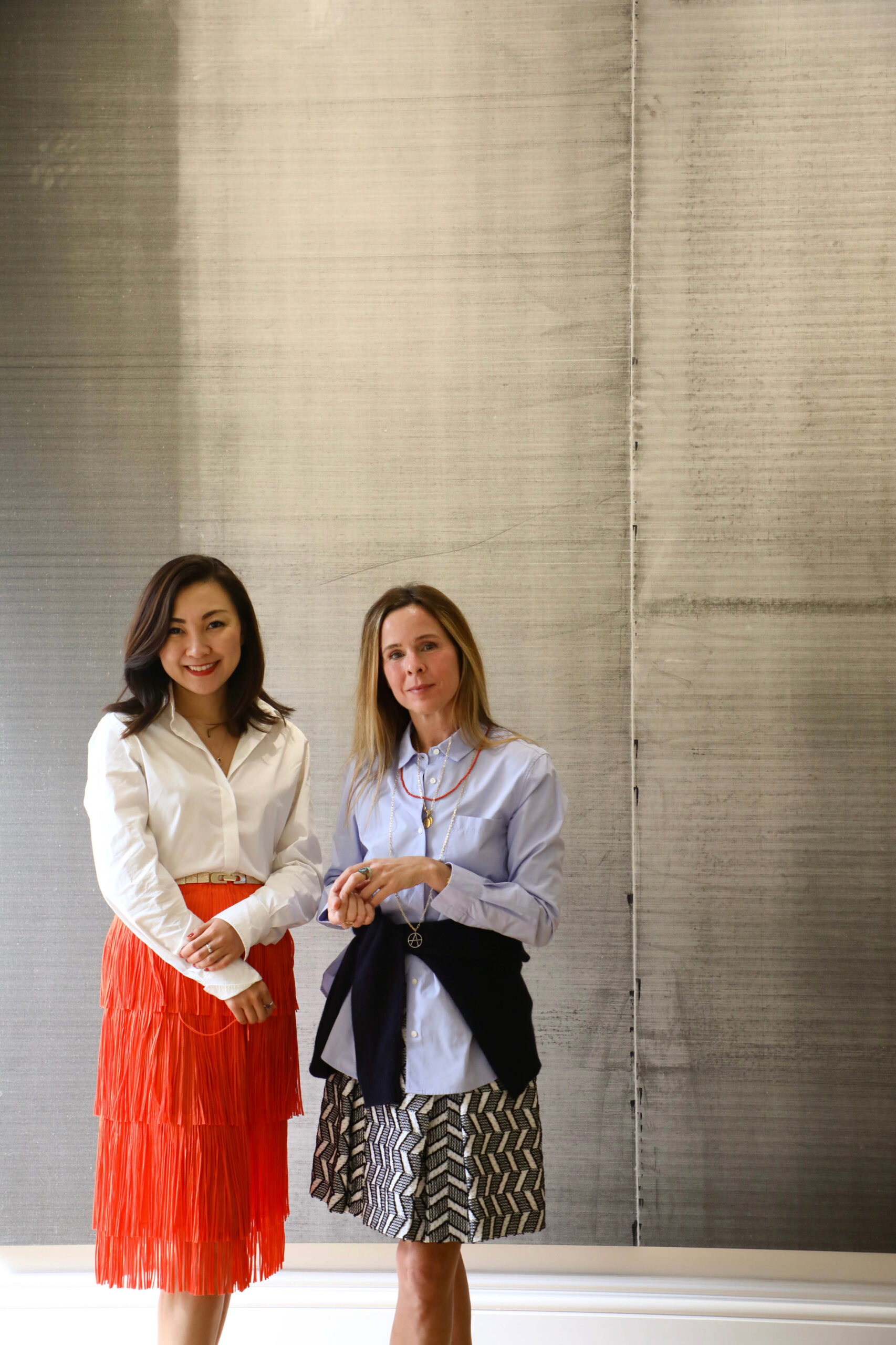
Those who dabble in the world of art collecting are no strangers to the name Rosa de la Cruz—a fine jewelry designer with an impeccable eye and the daughter of the illustrious founders behind the de la Cruz Collection, Miami’s crown jewel of private art museums. Spanning over 30,000 square feet, this collection has been a cornerstone in the rise of Miami’s Design District, shaping the city’s arts and culture scene into what it is today.
Now living in London, Rosa began collecting art around the same time as her parents, who have been ranked among the top 200 collectors in the world by ArtNews for many years, and their influence has permeated not only her preferences and aesthetic tastes but also her attitude and longstanding approach to life.

The de la Cruz couple and the de la Cruz Collection Miami
Rosa grew up with art and beauty. Her great grandfather designed the neoclassical Capitol building in Havana, which was completed in 1929, while her father grew up in a Beaux-Arts style house designed by Carrere & Hastings, the architects who created the famous The Frick Collection and New York Public Library.
Born in Madrid, Rosa spent her late childhood in Miami in a Neo-Palladian house designed by the neo-urbanist architect Andres Duany. For her, the concept of curation was implicit in her parents’ selection of architecture, art and design objects, both for their home and as art museum exhibits, and this cumulative aesthetic awareness was later reflected in the visual planning of her own home.

Rosa de la Cruz Collection Home Image Credit: AD
In her opinion, the selection and arrangement of an art collection should not have to sacrifice beauty and her curatorial approach to the collection emphasises the importance of each piece in its own right, but also the overall harmony of the collection and the unified artistic group it presents.
Rosa’s aesthetic is evident throughout her London home, a flat with a minimalist style in a classic Victorian building in Knightsbridge with over 3 metre high ceilings. Home to contemporary art, mid-century furniture and design pieces, geometric shapes and lines of harmony, each room maintains its unique character. In addition to a monumental museum-quality 1999 Laura Owens painting and small more intimate Peter Doig and Hernan Bas paintings from the same period, there are also several large works by Wade Guyton, Nate Lowman and Dan Colen in the main living room.

Left: Rosa and I in front of Laura Owen’s painting Right: Works by Hernan Bas
In the family room, Rosa wanted to make the space fitting for the family’s day to day living – designing a room that exudes a happy and playful uplifting mood. Here she has curated a collection that plays with the recurring bright colours, cylindrical shapes and continuous lines. The two works by Christopher Wool which flank the period marble fireplace emphasise the harmony and symmetry of the hang; while the large, colourful collage of mandalas behind the sofa, in the painting by Brazilian artist Beatriz Milhazes, one of the first works in Rosa’s collection, forms a visual dialogue with the stacked circles in the ceramic totems by Ettore Sottsass nearby.

Above: Collections of Beatriz Milhazes and Sottsass Below: A photo of me and Rosa
On the other side of the room, above a Pierre Jeanneret mid-century library chair, hangs a panda in a work created by artist Rob Pruitt specifically for Rosa’s Collection and its tree landscape blends effortlessly with the English garden seen through the adjacent bay windows.

Rob Pruitt
Floating above the vintage speakers originally made for The Beatles’ famed Abbey Road Studios are three candy coloured cut-out works with the letters ‘STP’ by Lucien Smith, a radical artist in the field of social dynamics. STP stands for “Serving The People”, a platform started by Lucien Smith to support and promote unknown emerging artists in art, music and film.
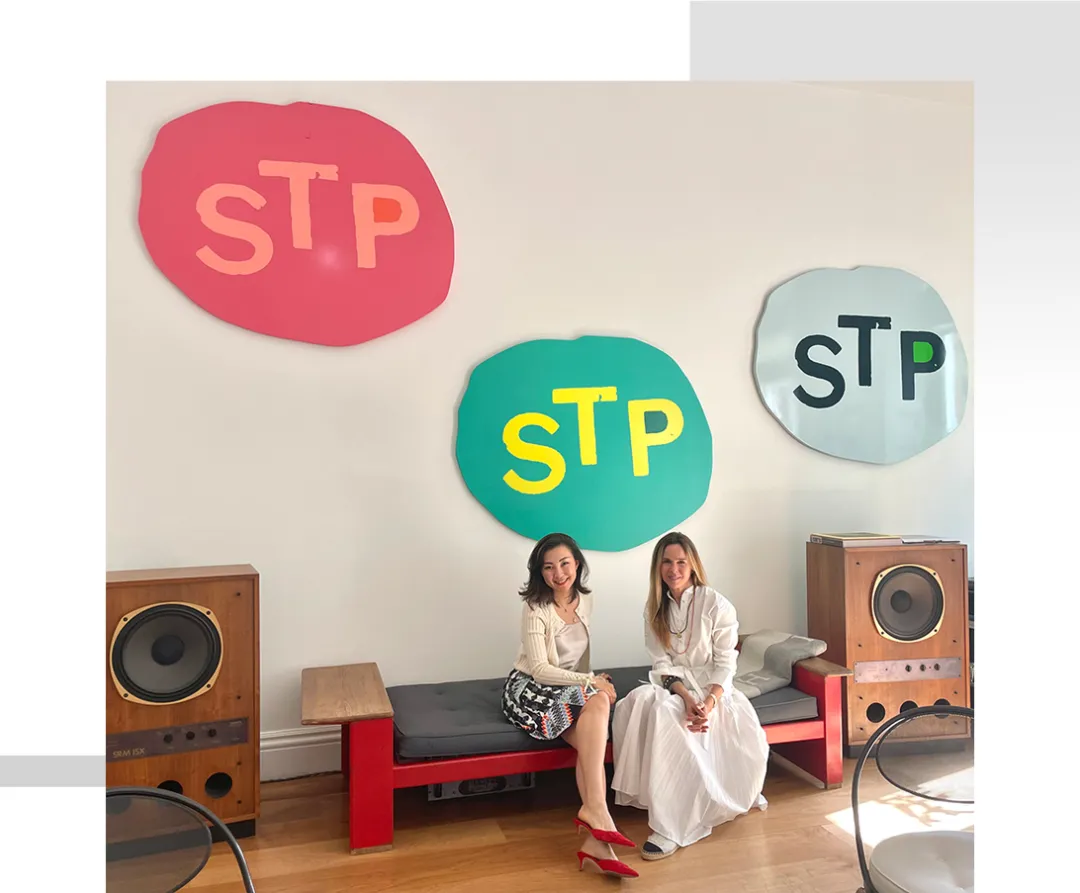
In front of the work of artist Lucien Smith
With an emphasis on visual harmony, Rosa has paid close attention to the yin and yang of the flat. In the main living room and family room, the two large public spaces, we see showcased mostly large stark abstract works, many by white male American artists working in the last decade, while in the private spaces of her flat, Rosa has chosen a more dreamy aesthetic featuring figurative feminine works. The hall leading to the family’s bedrooms features an installation recently commissioned from the female Scottish artist France-Lise McGurn and includes a mural painted on site by McGurn over three days and works on canvas including two paintings- one titled ‘AM’ and the other ‘PM’ – chronicling the family’s day to day.
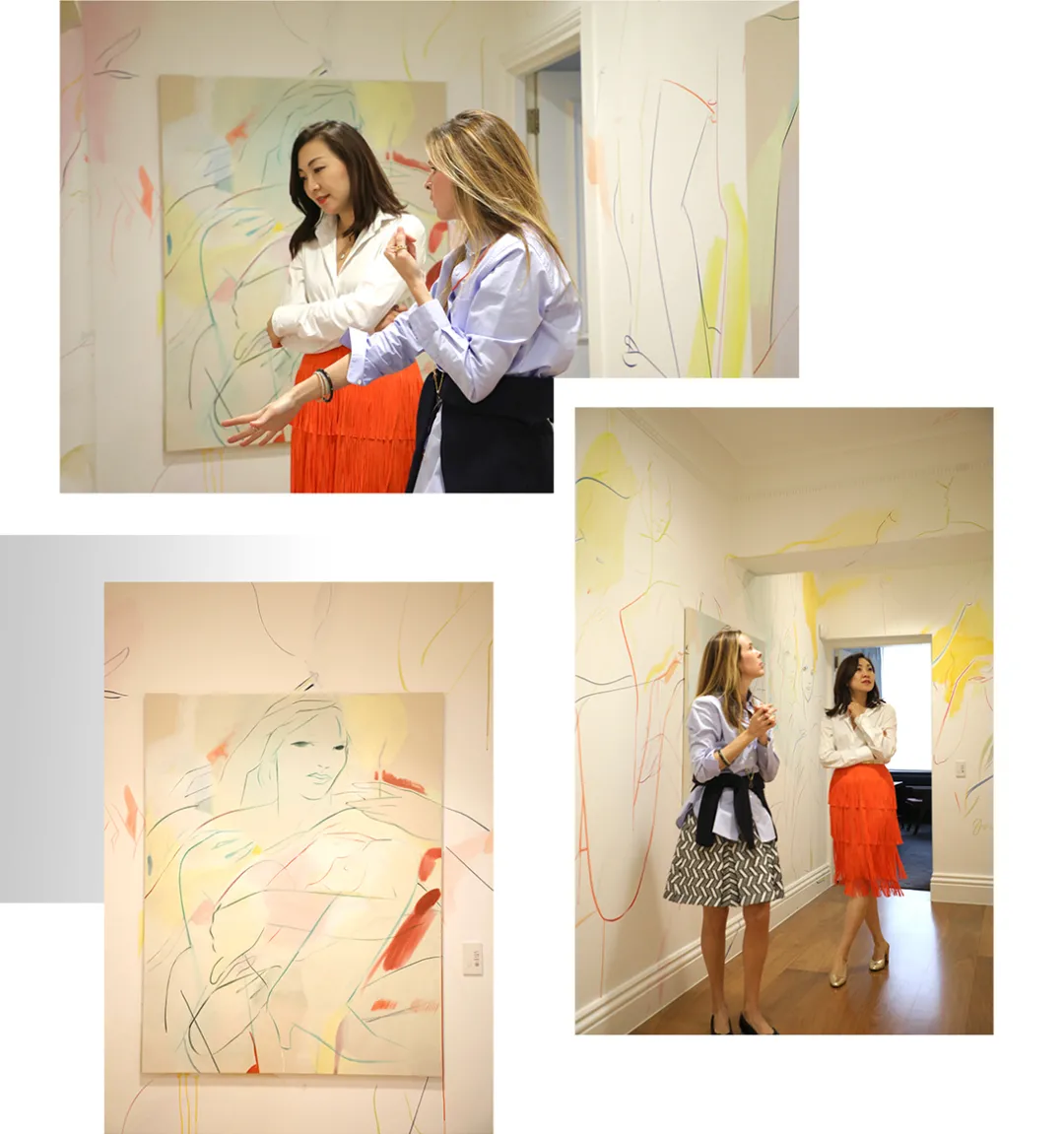
France-Lise McGurn’s works in Rosa’s corridor
The master bedroom, formerly the ballroom of the house in Victorian times, is adorned with an ornate vaulted ceiling reminiscent of a jewellery box. The collection of Chris Ofili watercolour portraits hanging above the bed took Rosa years to collect over the span of her collecting time, some procured from galleries and others at auction. The large collection of “Afro Muses” represented in these works play visually with the adjacent ceramic sculptures of Sottsass, creating a ‘tribe’ with references to everyday life, memory and the history of art.
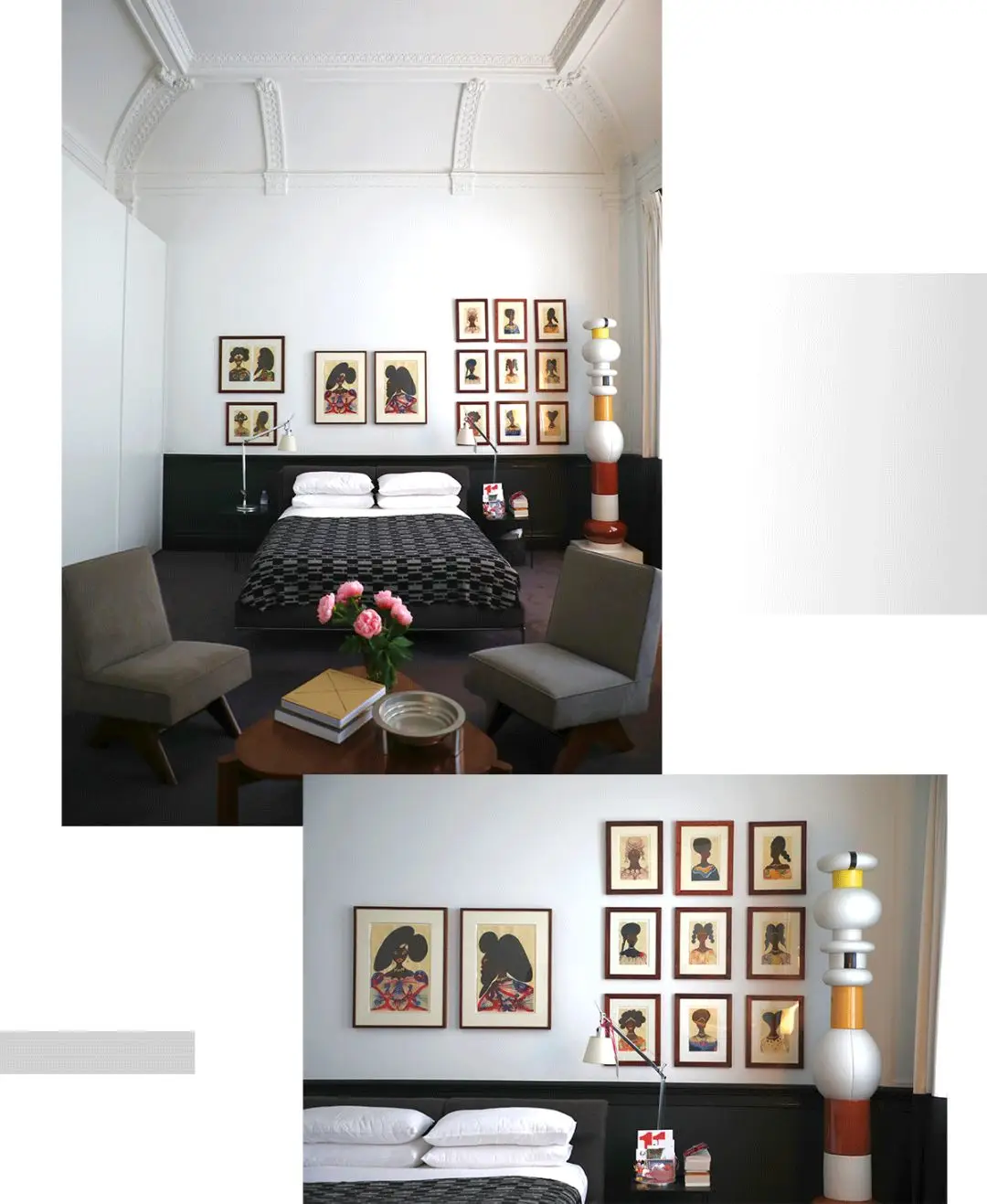
Chris Ofili and Sottsass in the bedroom
Thanks to the influence of her parents and the awareness and inclination of her unique upbringing, Rosa’s private collection does not sacrifice beauty, but still maintains a thought-provoking depth that reflects not only her personal experiences but also the course of art history in her time – a reflection of destiny in the context of the times. Rosa’s remarkable collection and aesthetic taste are the results of her many years of study and thoughtful experience as a collector as it is not enough to be able to make such choices based on instinct and natural talent alone.
The spirit of “constant learning” and “asking questions about art” runs through the entire de la Cruz family. When it comes to the de la Cruz Collection of Rosa’s parents, one name which cannot be overlooked is Felix Gonzalez-Torres, an artist that symbolised a turning point in her parents’ collection. Before this, the de la Cruz collection included works of Latin American artists such as Rufino Tamayo and Wifredo Lam, works of Modern Art procurable in the secondary market, but in 1992 the couple met Gonzalez-Torres, one of the leading figures in Conceptual Art working in the late 1980s and early 1990s.
Gonzalez-Torres’ work focuses on questions of personal identity and instability in the context of cultural and social politics. Since that fateful encounter, the de la Cruz collection shifted from formal art typical of a home to works that provoke and challenge the question of “what is art?” A question that continues to inform Rosa’s thinking to this day and which has always played a fundamental role in her own collection.
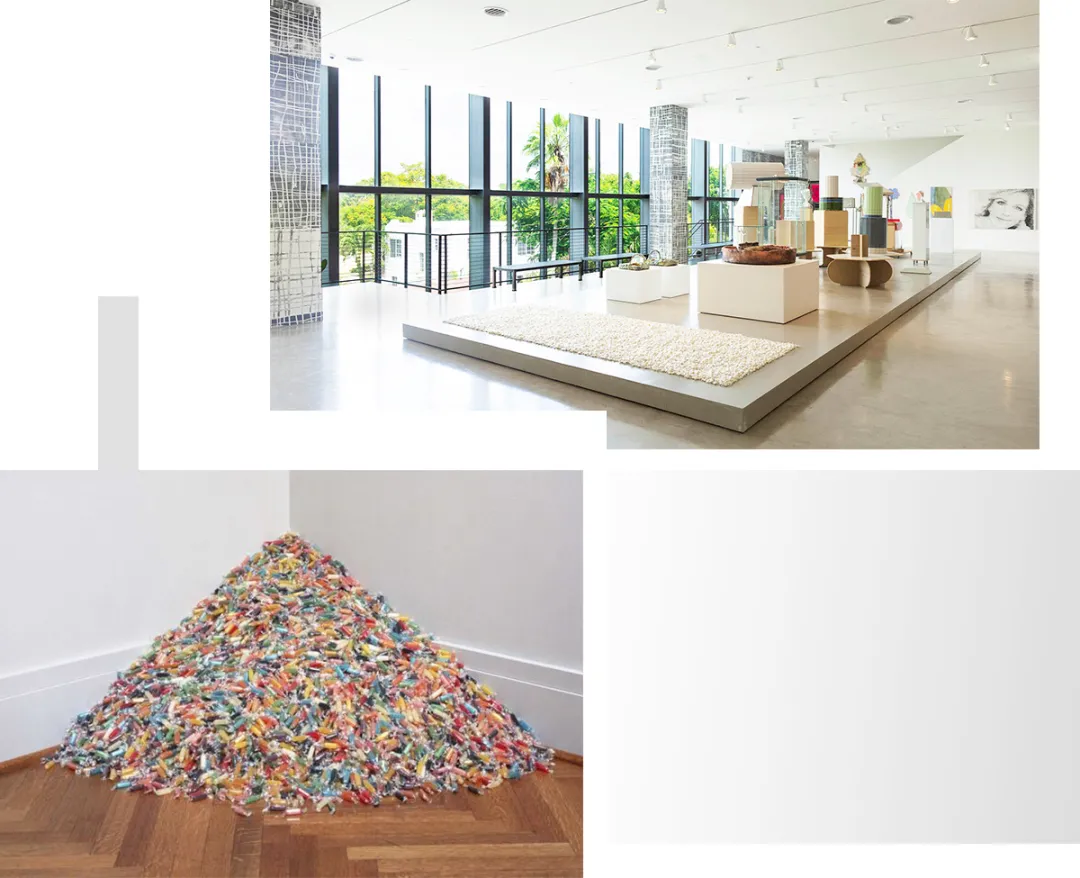
Felix Gonalez-Torres in the De la Cruz Collection
Many of the works in Rosa’s London collection follow her early acquisitions. In the late 1990s she lived in New York, where the art market was focused primarily on alternative forms of art such as Conceptual and Installation Art, and then in the 2000s Process Art, where painting techniques included airbrushes, sponges, knives to describe both the act and the result of the action. Many of the artists in Rosa’s collection including Christopher Wool, Wade Guyton and Dan Colen, are representative of this Process Art.
When she first came to London, Rosa became interested in the works of the YBAs (Young British Artists) and began to add these to her collection; the Ofili watercolours, the early neon ‘I dream of Sleep’ by Tracey Emin in the office space, a Gary Hume work in the kitchen, and a painting of a ski scene by Peter Doig – the Scottish painter who took a different approach in the late 1980s and early 1990s when the YBAs’ generation of conceptual and installation art dominated the British art scene (an identical large work is in the Tate permanent collection).
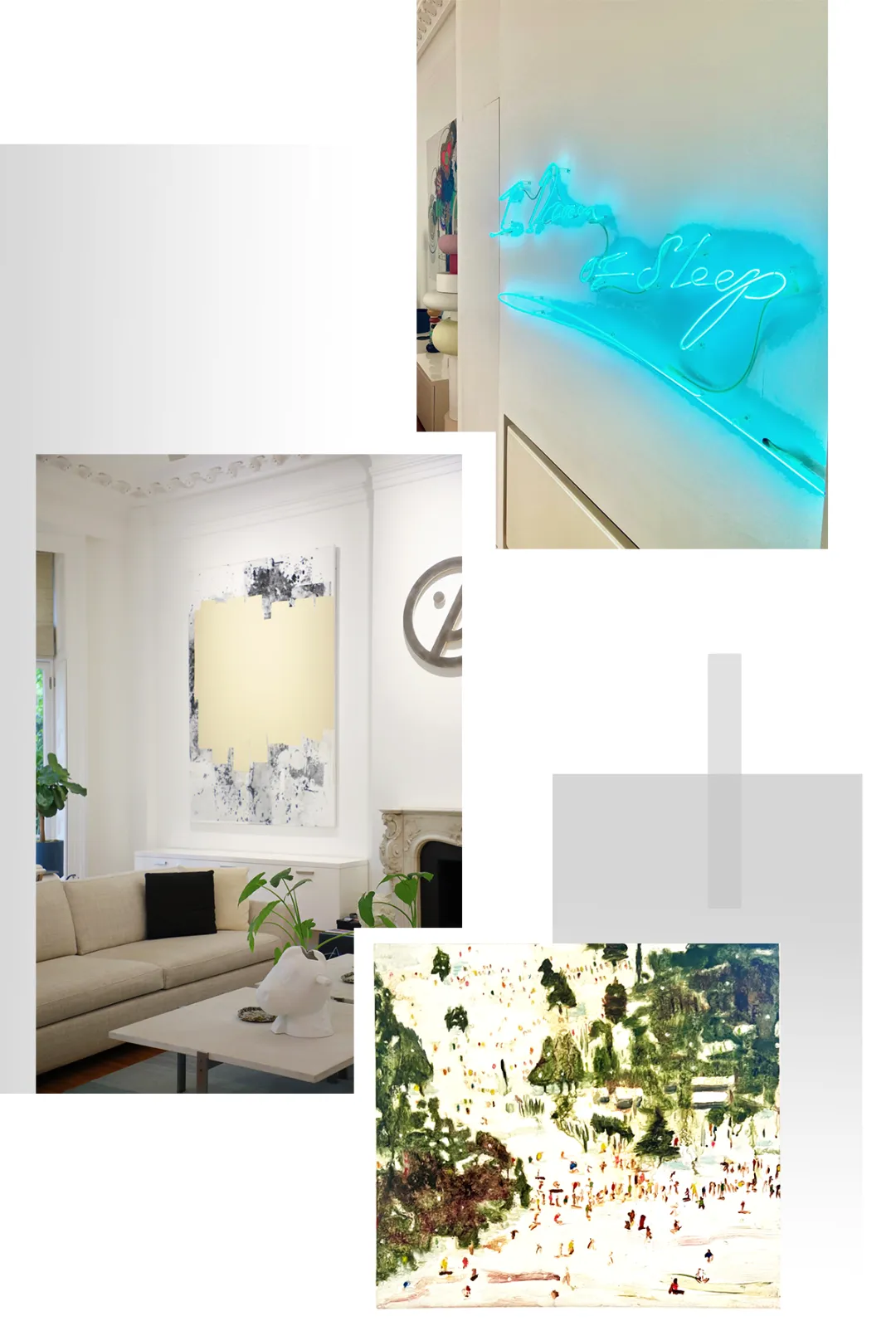
Top to bottom: by Tracey Emin, by Christopher Wool, by Peter Doig
In Rosa’s main living room, above a Jean Prouve sideboard, is a large “X” canvas by Wade Guyton. Rosa has several works by Guyton in her collection – inspired by their quiet yet striking minimalism but also by the process of creation behind the works. When making his works, Guyton folds the canvas and feeds it into a large format printer, a method that is neither predictable nor controllable in terms of what might emerge. As Rosa says, an artist can plan and design and attempt to control the process, but in the end, the role of chance can never be ignored- resulting in unforeseen ink smudges in the case of Guyton’s work.
The baroque fireplace next to Wade Guyton’s work anchors Nate Lowman’s iconic ‘bullet hole’ work. When she first moved into the Victorian house, Rosa was at odds with the gilded baroque period fireplace which was too flashy and over the top for her minimalist aesthetic. With time, Rosa started to appreciate and embrace the playful contrast with this conversation piece that had been presented to her perhaps an unforeseen coincidence in life, and the eclectic style became a cherished part of the home.
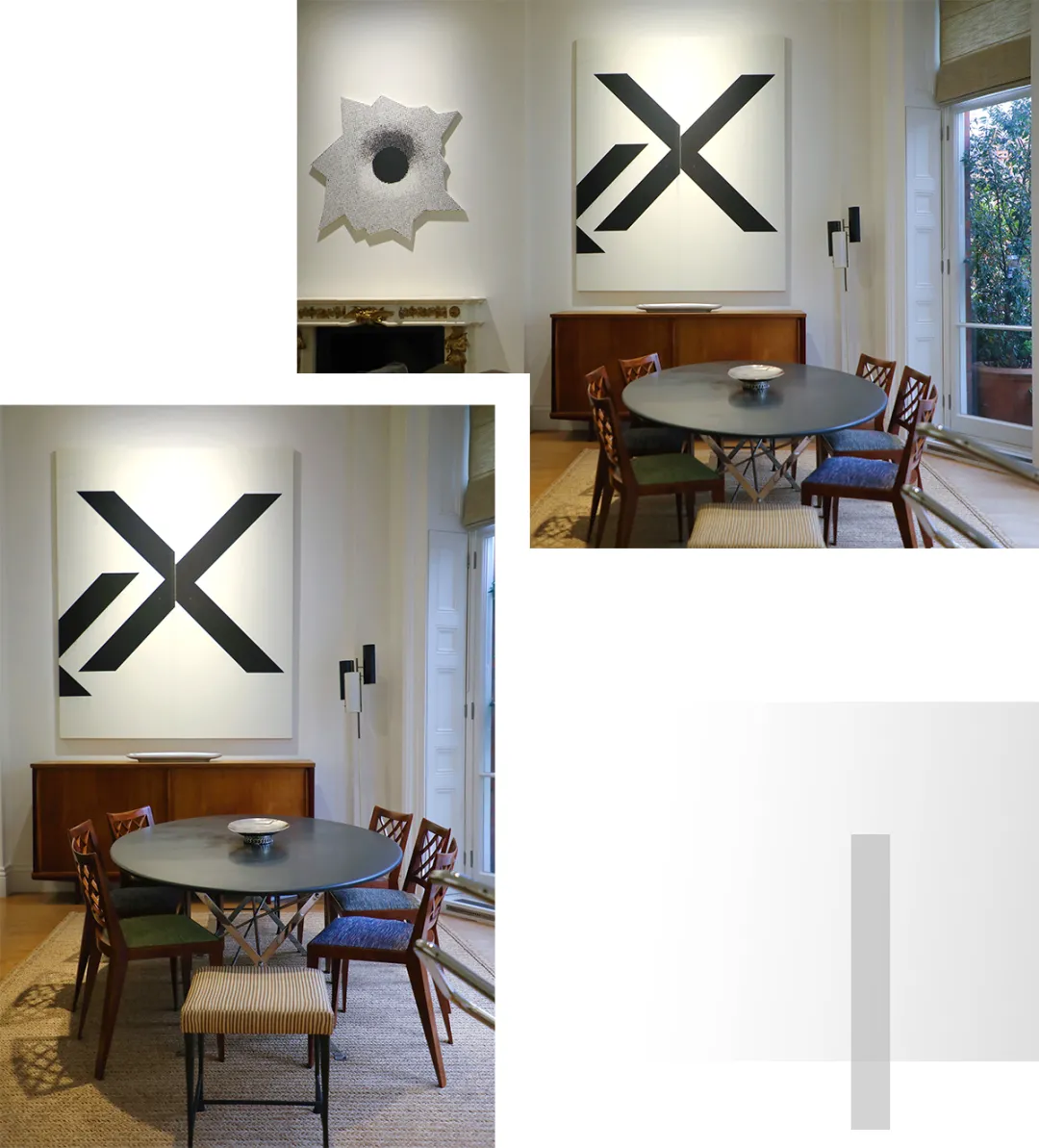
Wade Guyton’s work and dining table
The story behind the sculptural painting by Thomas Houseago that greets you when you enter Rosa’s home is also about the play of coincidence in life. This work was a gift from Rosa’s parents and, like many contemporary artworks, is titled ‘Untitled’ . One day Rosa’s son stumbled upon a study drawing for the work on canvas titled ‘Four Brothers,’ which resonated with her and the family home as she has four sons.
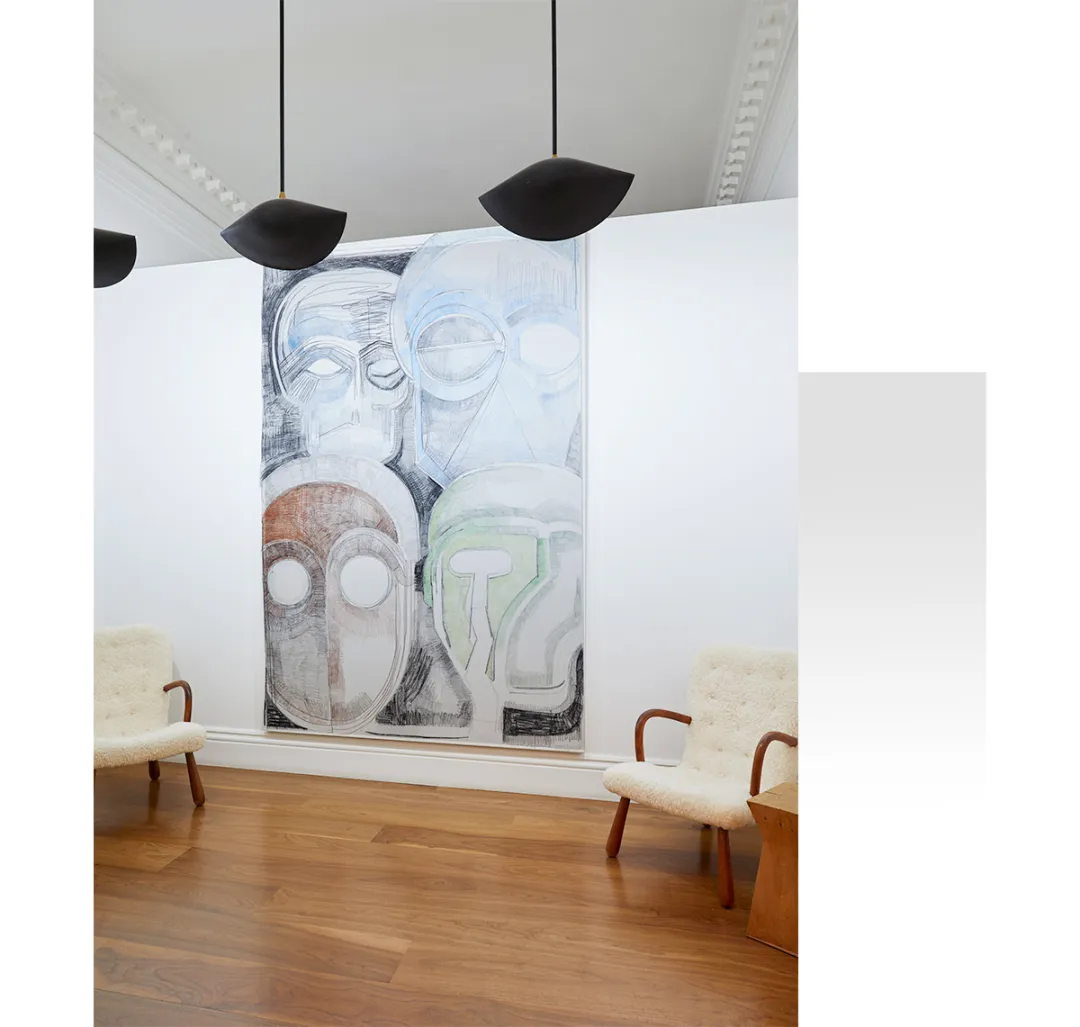
Thomas Houseago – Image Credit AD
Visiting Rosa’s private collection and learning the intriguing stories behind it made me realise that the aesthetic of a collector is not only reflected in the curation and editing of the collection. The ability to give visitors the sensation of “making their eyes travel” is also rooted in the intellectual and spiritual search and the substance and thought behind every choice throughout one’s life.
Miami’s de la Cruz Collection places a strong emphasis on education and has provided free entry and public programmes as well as a fully sponsored summer educational trip and curriculum for local students to visit Europe and China as well as study at Parsons and other art institutions in New York. In Rosa’s view, her super-collector parents’ deepest influence on her has always been their generosity and pursuit of education.
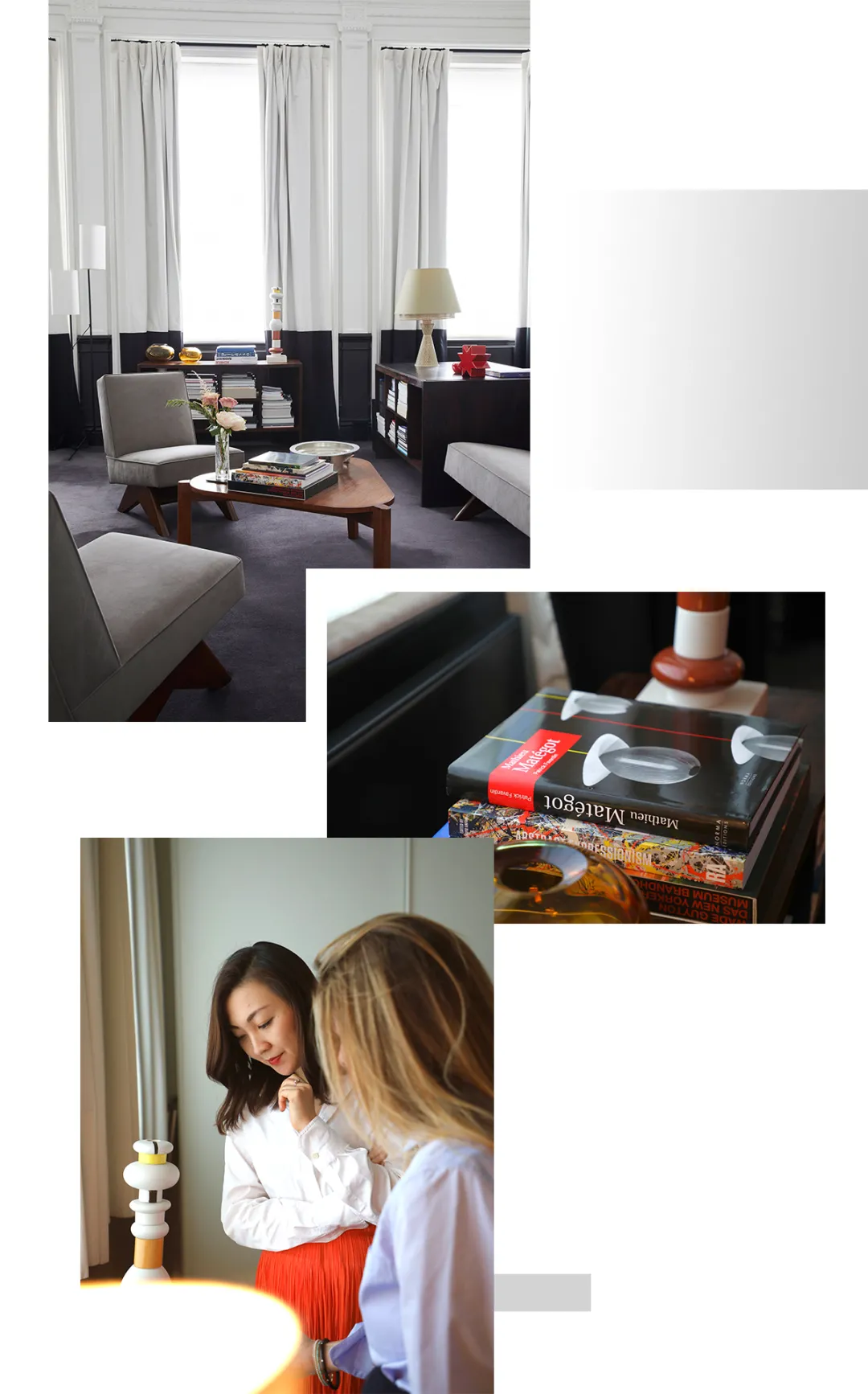
A set of Pierre Jeanneret chairs in Rosa’s home
Running and maintaining a collection is not just about owning works, it is about long-term care and commitment as well as a sense of responsibility regarding the process of education and sharing. Collecting and sharing is, in Rosa’s opinion, an ongoing education in itself. Not simply formal studies, but also the constant learning outside the school gates and the interaction with people in everyday life. Art can provide this opportunity, and in the process, there are countless opportunities to meet fascinating people and engage in the thought-provoking conversations that emerge. The inspiration we gain from these exchanges and the enrichment of our personal knowledge and vision through them is, in a way, part of living an evolving and engaged journey in life.
-the end-
Text: Luning
Copyediting: Rosie


